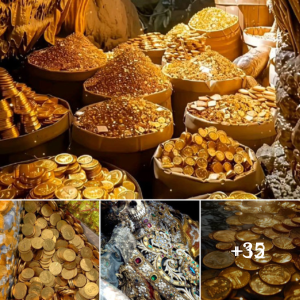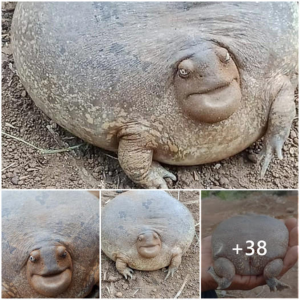Manchester Museum (part of the University of Manchester) is home to an impressive collection of ancient Egyptian artefacts, many of them collected during William Matthew Flinders Petrie’s excavations at Hawara in the Fayum region of Egypt in the 1880s and in 1911. The Golden Mummies of Egypt exhibition, which has recently opened in Manchester following a tour of several museums in the USA and China, features 107 objects and 8 mummified individuals from Manchester Museum’s collections.

The majority of these objects date to the Graeco-Roman period (300 BC-AD 300), when Egypt was ruled first by the Ptolemies – a dynasty of Macedonian descent, ending with Cleopatra VII in 31 BC – and then by a series of Roman emperors. This period is often overlooked by Egyptology enthusiasts in favour of Pharaonic Egypt, but, as the artefacts on show demonstrate, it was a fascinating time in the country’s history, with the multiculturalism of society reflected not just in the trappings of everyday life but also in the beliefs and practices surrounding death.
The traditions around death and the afterlife – in particular, the role of mummification – are perhaps the most famous aspect of ‘ancient Egypt’ in popular culture, but Dr Campbell Price, the exhibition’s curator, suggests that it might be necessary to question some of the myths and preconceptions surrounding these customs.

It is often thought that mummification was about the preservation of the deceased’s body, but this may not have been the main priority for the ancient Egyptians carrying out the process. Instead, Campbell Price suggests, mummification was about deification. The steps involved – the purification of the body with natron, its anointment with fragrant plant resins, its wrapping in linens – were all ritual processes also performed in temples on statues of the gods. They were a way of ritually transforming something (whether wooden statue or deceased human) into a ‘god-like being’; according to Egyptian beliefs, this was a necessary step in being able to join the gods in immortality. In the Graeco-Roman period, many foreign settlers living in Egypt adopted these customs, which offered the chance of an idyllic afterlife, in contrast to the Classical beliefs surrounding death, which were somewhat less optimistic.

The outer appearance of the mummies was central, too, to the process of deification. During the period in question, the wooden coffins of earlier centuries were supplanted by cartonnage masks and other coverings that were attached to the mummies’ linen bandages. These cartonnage elements were often covered in gold leaf and ornate decoration, but, although it is true that the process of mummification was available in its entirety to only the very wealthiest in society, the mummies’ dazzling appearance was not simply a display of riches. Egyptian sources describe the gods as having gold flesh and hair of lapis lazuli, so gilding a mummy and painting its head covering in blue was an important step in bringing about the divine transformation of the deceased. In fact, it is likely that many of these mummy masks looked more like gods and goddesses than the deceased themselves: rather than being intended as faithful portraits, they represented an idealised being who would reflect the individual’s appearance at the moment of their rebirth in the afterlife.
Also on display are a number of the so-called ‘Fayum portraits’, which were sometimes used instead of cartonnage mummy masks. These thin wooden panels, which were attached to the mummy over the face of the deceased, bear pictures built up using a mixture of hot wax and pigment. Probably developed in ancient Italy, the technique is used to create an extremely lifelike image. These portraits are found at various sites around Egypt, but are most numerous in the Fayum region, where the first examples were identified by Flinders Petrie in the 1880s. The images were immediately popular with the 19th-century public, and they continue to capture our imagination today, the glint in their eyes every bit as alluring as the glistening gold of the gilded mummies. Their vivid naturalistic style often leads viewers to assume that these ‘portraits’ must be exact images of the deceased, but Campbell Price stresses the importance of understanding them in their original context. These were not perfect Polaroid snapshots – indeed, it is likely that many were painted post-mortem, or may not depict the deceased at all. In one example from Hawara, the portrait depicts a lithe young man, while CT scans reveal skin folds indicating that the individual was overweight in life. Like the golden mummy masks, the Fayum portraits were about presenting a particular version of the individual for the afterlife.

The last section of the exhibition explores the reception of these objects when they were discovered in the late 19th and early 20th century. At the time of Flinders Petrie’s work in Hawara, the European-controlled Egyptian government allowed foreign archaeologists to export significant quantities of the artefacts they had excavated. These items were brought back to the West, where they were placed on display. Although Flinders Petrie himself did not think much of the combination of Greek, Roman, and Egyptian features in the material he found at Hawara – particularly complaining about the ‘plague of gilt mummies’, which he described as ‘gaudy’ – many of these finds met with great enthusiasm in Britain. In particular, the Fayum portraits captivated the public, receiving top billing at the Egyptian Hall in London. There they were visited by hundreds – among them, perhaps, Oscar Wilde, whose novella The Picture of Dorian Gray is thought to have been inspired by the lifelike images.
Over a century later, the Golden Mummies of Egypt exhibition celebrates the compelling culture of Graeco-Roman Egypt, while also presenting visitors with a chance to reconsider existing ideas about life and death in the ancient Egyptian world, offering new insights into a subject with which we might think ourselves already familiar.
Golden Mummies of EgyptAddress: Manchester Museum, Oxford Road, Manchester, M13 9PLOpen: until 31 December 2023
Website: www.museum.manchester.ac.uk/whats-on/golden-mummies
A beautifully illustrated book to accompany the exhibition, Golden Mummies of Egypt by Dr Campbell Price, is available to buy online: https://manchestermuseumshop.com/products/golden-mummies-of-egypt-hardback.
Going for gold: reconsidering mummies from the Graeco-Roman period
Mummies with golden tongues discovered in Quesna

PHARAOH: KING OF EGYPT An international touring exhibition of more than 120 objects from the British Museum, exploring the ideals, symbolism, and ideology of Egyptian kingship, and the realities of life in ancient Egypt. The exhibition is organised by the Caixa Foundation, in collaboration with the British Museum. A bronze…
In “Museum”

Egyptian expeditions MUSÉE ART ET HISTOIRE, BRUSSELSParc du Cinquantenaire 10, 1000 Brussels, Belgiumwww.artandhistory.museum31 March-1 October 2023 Telling the story of 200 years of discoveries in Egypt and the formation of the museum’s Egyptian collection, the exhibition will include nearly 200 objects, including sarcophagi, funerary stelae, canopic jars, and shabtis (many…
In “Museum”
EGYPTIAN MUMMIES: EXPLORING ANCIENT LIVES An international touring exhibition exploring the hidden history behind six ancient Egyptian mummies from the British Museum, as revealed by state-of-the-art, non-invasive technology. Lid of the inner coffin of Ameniryirt (Twenty-sixth Dynasty), one of the highlights of the Egyptian Mummies: Exploring Ancient Lives exhibition. Image:©…
In “Museum”





